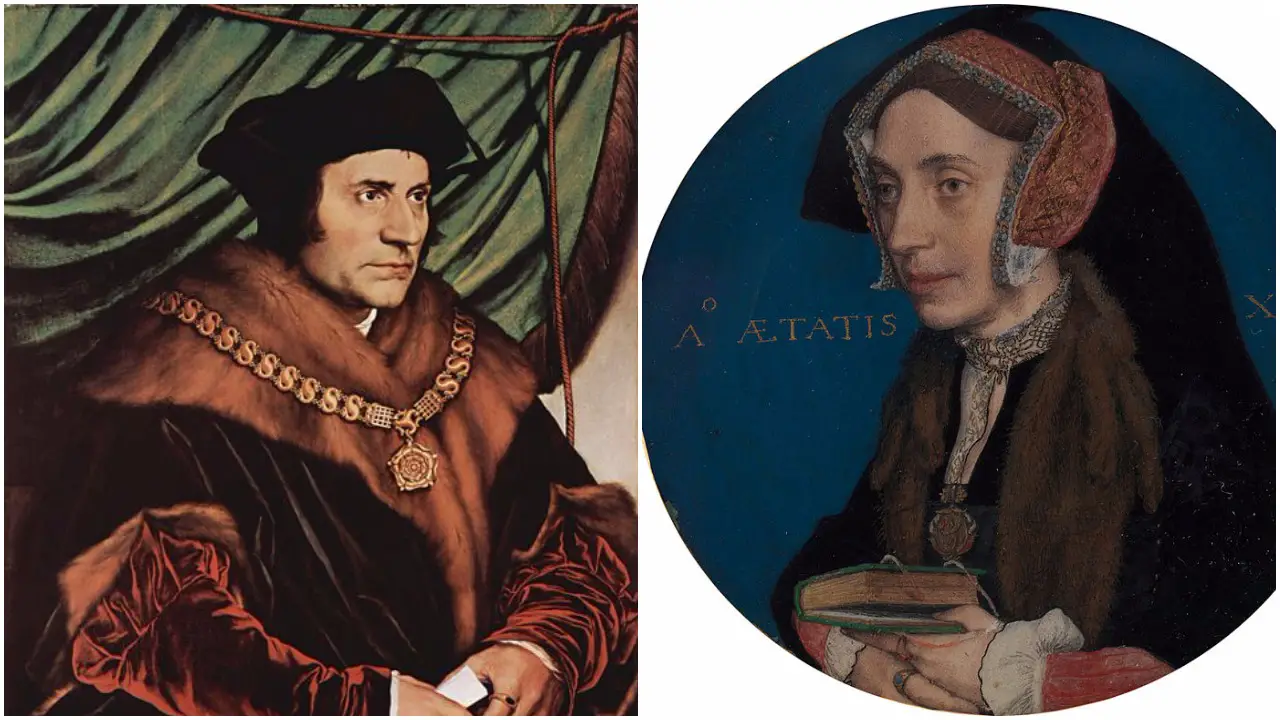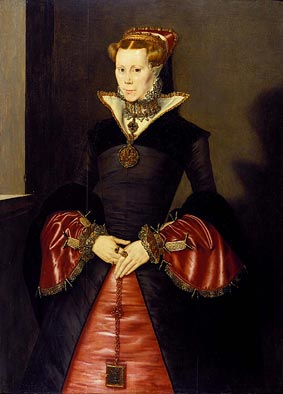In today's Claire Chats video talk, I finish my series on the treatment Mary received at the hands of her father following the breakdown of her parents' marriage. I examine what happened to Mary after the death of her mother in January 1536 and Anne Boleyn's execution in May 1536.
If you missed parts 1 and 2 then here are links to watch those two talks first:
- https://www.tudorsociety.com/the-treatment-of-mary-tudor-mary-i-part-1/
- The Treatment of Mary Tudor (Mary I) Part 2
Notes and Sources
- Calendar of State Papers, Spain, Volume 5 Part 2, 1536-1538, 9, 70; dditions and Corrections, p. 574.
- Letters and Papers, Foreign and Domestic, Henry VIII, Volume 10, January-June 1536, 307, 1083.
- Wiesener, Louis (1878) La jeunesse d'Elisabeth d'Angleterre (1533-1558), Hachette et Cie.
- Lingard, John (1820) The History of England, from the First Invasion By the Romans to the Accession of Mary, Volume IV, p.244.
- Cassell, Peter (1873) Cassell’s Illustrated History of England, Volume 2, p6.
- Speed, John (1611) The History of Great Britain
- State Papers: King Henry VIII, Volume I, Parts I and II, p.457-458.
- Letters and Papers, Foreign and Domestic, Henry VIII, Volume 11, July-December 1536, 576, 597.



Thank you for these three wonderful videos about Mary and what she went through from 1533 to 1536_ separated from both parents, friends, servants and the English people who loved her. It is very sobering and frightening reading all the threats and warnings that she could have faced death unless she submitted to the annulment of her parents marriage and to Henry as Supreme Head of the Church. It was all fine and good Queen Katherine telling her to hang tight and not to give in, but Mary was barely out of childhood and was in a more vulnerable position. The law allowed Henry to treat her as he wished for being a disobedient daughter, which dishonoured him as her father. Children had to kneel for the blessing of a parent and bow or courtesy to them every day, let alone doing what they were told and as a woman she was subject to him as her Lord and his property until she married. As you said in this part, Mary was also English and so the King’s subject as if he was God and she was acting as a rebellious and naughty subject. Henry from his point of view was quite within his rights and all he wanted was her obedience and everything would be fine.
Mary was thus in a position that put her at risk. Katherine was banished and was not an English subject, but had powerful family members to make threats on her part, so her life was most probably not at risk, despite the rhetoric of the Commissioners. I also slightly feel for the men as well, who at the end of the day are doing as King Henry wanted. Yes, they are big bullies and may have spoken beyond the scope of their instructions, but they too are servants and subjects and one step from the Tower. People made protests in favour of Mary, including Jane Boleyn and ended up in the Tower and her friends and household were constantly questioned. It is little wonder they fell on their knees to beg her forgiveness later on, they are probably uncomfortable with these visits to bully her. One report early on in 1534 had a visit from Anne to her daughter has Norfolk and the others sneak off and pay court to Mary. Anne complained to her husband who took them all to task and gave orders that his wife was to be shown more respect. Mary endured being kept in her room, being harassed, threatening behaviour, but I doubt Lady Sheldon actually hit her, she was threatened by poison from Anne Boleyn and during 1534 and 1535 things got worse.
As we can see the Princess became very ill but her mother wasn’t allowed to nurse her but Henry sent her medical care. There are also small pieces of evidence that from time to time Henry did move Mary out of the household of Elizabeth for her recovery, before she moved back. It is very interesting how Henry became more kind in 1536, especially as before Mary was so desperate that she was on alert for an escape and was frightened for her life. He gives her £100 and clothing and moved her but he did have a motive. Henry had her moved inland to prevent her escape and of course that means moving her to her own establishment and improved her lot. After Anne’s unfortunate miscarriage her treatment and contact from Court improved. It is little wonder that Mary believed she could come back to Court once Anne had been executed.
Mary naturally believed Henry was going to be her good father once Jane was in place because she thought he loved her and was controlled by Anne. Anne did make threats and personally gave orders for physical violence against Mary but she also tried to reach out as long as Mary recognised her as Queen. At least Jane spoke to Henry in support of Mary and wrote to her. It was, however, Cromwell who has to be given the main praise for helping to reconcile Mary to her father, not any of his wives. It was Cromwell who took Mary’s letters to her father and whom she wrote to and it was only on strict conditions of her full submission that Henry forgave and restored Mary. It was Cromwell and Chapuys who sent letters for her to copy and who guided her in her submissions to Henry. Knowing the threats made by a delegation to her which frightened her, Chapuys told her to submit and to accept the articles Henry asked Mary to sign and she finally did. It was only after several visits with Jane and Henry and letters abroad that Mary finally came to Court.
Mary never really blamed her father, but she was shocked by her treatment from his nobles and Council as well as the threats. Her relationship after 1536 until his death was a healthy one and Mary was the only child Henry Viii enjoyed an adult relationship with. Mary was as intelligent as her well educated mother and father and although not bitter afterwards, she had to be affected by all of this. Ironically it was Mary who was the most merciful of the Tudors towards rebels and traitors, despite her underserved reputation.
in the lady in teh tower, alison weir says that the story of anne going down on her knees is a fable. it has an index, i think and it was in one of the pgs talking about kingston. weir says that the historian who wrote this had impeccable credientals and had access to papers that are long lost to us. (didn’t mention why, but claire said that they were accidentally burned.)
just bizarre that mary’s considered full english ’cause elizabeth boasted that she was “mere english” even though her ancestry came from italy, germany, scotland, wales, france, and ireland. i thought she only boasted that ’cause people resented the spaniards. (mary dragged them into the war v. france which resulted in the loss of calaias, a financial gain, but they wanted it for national pride.) she was the granddaughter of the spanish kings (isabel of castile & leon as well as ferdinard of aragon!)
it’s ironic that she’s known as “bloody mary” even though she was the most merciful of the tudor monarchs when it came to traitors and only burned people at the stake when she thought she had to in order to concieve an heir. she didn’t want the daughter of anne boleyn to rule and to reverse her religious policies. she was convinced that she was saving their souls from eternal damnation and linda porter’s book mentions that she had little direct involvement!
parliament had rejected her request to have their cousin, margaret douglas, the daughter of henry viii’s elder sister margaret, made queen. yes, margaret douglas was given a lavish funeral paid by elizabeth and was the mother of darnley. she was secretly engaged to anne boleyn’s uncle at the time of her downfall (scandalous) and had an affair (scandalous) w/catherine howard’s brother when she had her downfall. i think that she would’ve slept w/anne’s uncle who was mentioned as mary’s bully in this video. they were ordered by the king.